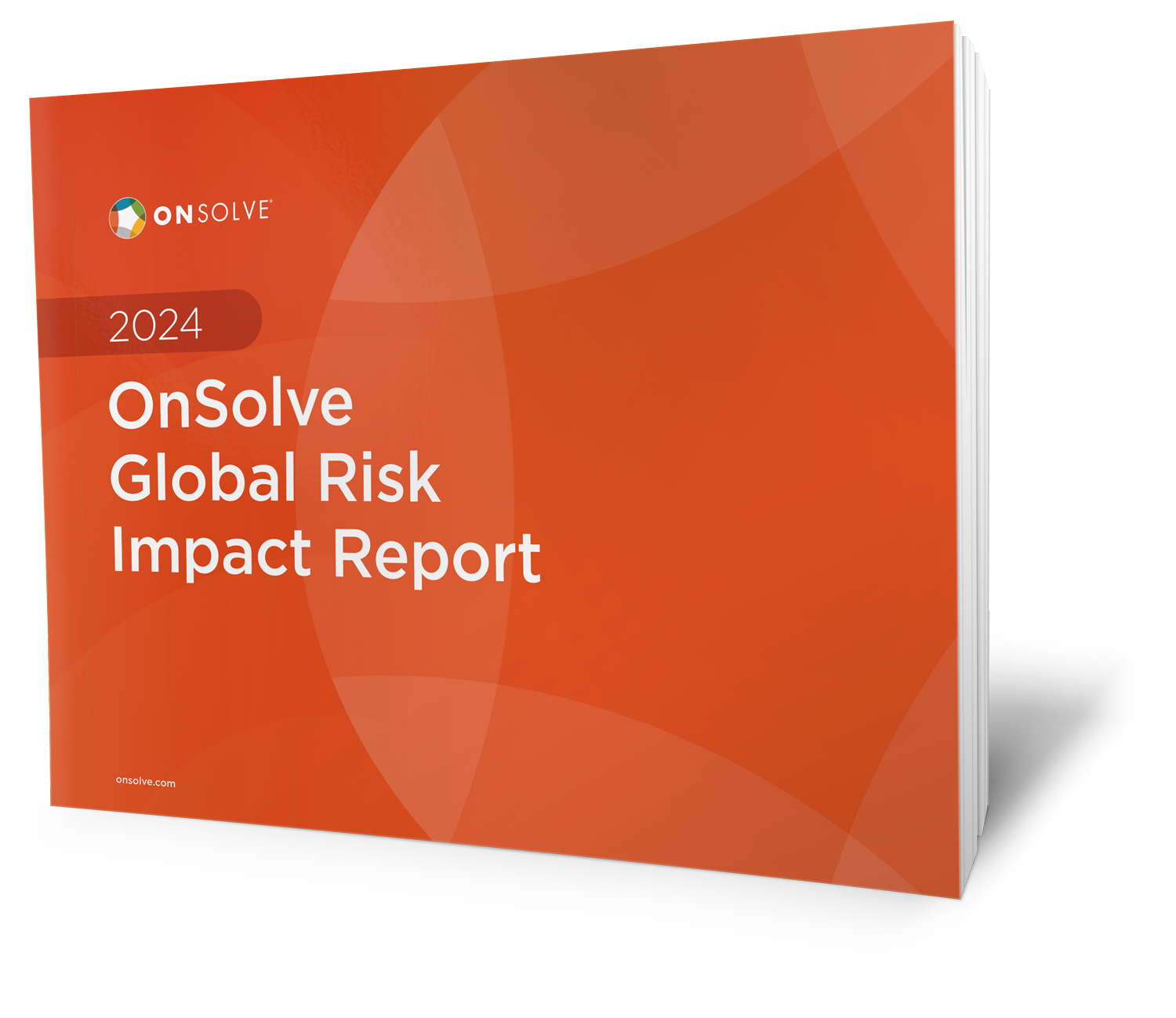OnSolve provides technology to help organizations become more resilient. Why? Resilient organizations better withstand shocks. They are also better to work for, especially during crises – and crises are increasingly common. This is complicated by the fact that risks are increasingly dynamic, and they compound. At the core, resilient organizations take better care of their people – and their stakeholders. And over the long term, resilient organizations are more profitable. When organizations invest in people to build Organizational Resilience, the financial value of the organization itself increases. Building resilience “does well by doing good.”
Bending, not breaking
If we’re talking about resilience, why focus this blog on culture? In our roughly 25 years’ experience, we’ve worked alongside literally tens of thousands of small and large teams as they’ve implemented our software to mitigate risks. While we focused our primary work on critical event management (CEM) – detecting and communicating risk – it’s been common for us to grow with customers across their careers. As individuals rotate in and out, we frequently have more organizational continuity than the team itself. This experience has given us a front row seat on cultures that embrace resilience, cultures that don’t, and even how cultures can evolve over time. The companies that built a culture of resilience prior to 2020 had better outcomes related to COVID, Ukraine, the supply chain crisis and a host of other challenges.
What do we mean by organizational culture?
There’s a host of academic research on this topic, but broadly and simply, for this blog we define culture as “the ways that employees and teams actually interact in their work.” We include in this definition:
- Leaders’ and employees’ words and actions
- Their narratives and direction
- Statements and meetings across, up and down the organization
What do we mean by organizational resilience as applied to culture?
At OnSolve, we’ve previously stated that organizations are resilient to the degree that they can anticipate, prepare for, respond to and adapt to incremental change and sudden business disruption in order to survive and thrive after a crisis. With that lens in mind, let’s discuss how resilient cultures help organizations stay in the game, recover and learn, and adapt and grow.
Cultures are resilient when:
- Employees can be intellectually curious. Frequently, organizational challenges can arise from the periphery of our day-to-day work. Resilient cultures allow for the space to identify and discuss risk even if it goes against the prevailing assumptions or narratives.
- Employees are trusted. Trusted employees can wave the flag when needed.
- Employees are empowered. Empowered employees can act to directly solve problems quickly, and when needed, elevate challenges.
- Employees are connected. Connected employees can rely on each other to face hard challenges. More on this below.
- Employees are working toward a broader purpose. Purpose provides meaning amidst challenges, provides deeper direction when specific guidance isn’t clear, and enables faster decision-making at all levels. Military veterans will recall the power of a properly disseminated “Commander’s Intent,” a key element of which is “expanded purpose.” This information can enable solution-oriented improvisation in the absence of clear guidance – be it the fog of war or the next risk event in the corporate space.
Resilience is a team sport: a team of doctors survive the crushing blows of COVID, together
In researching this blog, one of the most compelling narratives came from the HBR 2021 article, “The Secret to Building Resilience.” The article chronicles “Jacob,” a hospital anesthesiologist working at the height of repeated COVID outbreaks. Consider the challenge: there is no work from home; there is only increasing hospitalizations, increasing intubations, sick teammates, reduced staff and a gap in PPE.
Ultimately, it was Jacob’s teammates who encouraged him – who took on additional shifts and who became his outlet of frustration. Researchers Rob Cross, Karen Dillon and Danna Greenberg annotated how interactions from within and across Jacob’s informal and formal teams enabled him to survive and, ultimately, to thrive. They describe how a “well-developed network of relationships can help us rebound from setbacks:
- “Help us shift work or manage surges
- Help us to make sense of people or politics in a given situation
- Helping us find the confidence to push back and self-advocate
- Helping us see a path forward
- Providing empathic support so we can release negative emotions
- Helping us to laugh at ourselves and the situation
- Reminding us of the purpose or meaning in our work
- Broadening us as individuals so that we maintain perspective when setbacks happen”
A personal application: resilience from networks
Sometimes professional and personal lives intersect, and here I saw the power of networks at a deeply personal level.
In April 2020, I learned that my third child, still in utero, would likely be born with “half a heart[1]” and brain structure abnormalities. We were told that these two major abnormalities, threatening and debilitating in themselves, were likely the result of a severe genetic syndrome. A week after birth, this prediction proved true. The news was, of course, devastating. The sky seemed to literally go dark.
But in the days, weeks and months that followed, my wife’s and my entire community “swarmed” to help. Co-workers enabled me to shift work. Family flew across the country to Los Angeles to care for our older children while our newborn was undergoing a brutal series of life-saving open-heart surgeries. My co-founder offered meaning in the midst: “Chris, as parents we tend to think that our children are here for us…but we are here for our kids. Be there for Caleb.” Friends from our faith community leaned in with meals (work shifting), and even recommendations for medical care. UCLA, where many of our friends work, has an incredible PICU, cardiology and surgical team, and follow-on genetics and therapies. Their recommendation helped us to find a path forward. Therapists helped my wife and I process, releasing negative emotions. Although this time included some of the worst days of my life, it was also a mixture of joy, love, grief and hope. I look back on this experience knowing full well that, had it not been for these networks, we would have been crushed.
Zooming back out, what are their applications for organizational leaders? We provide key takeaways below.
Does culture just happen? Or can a resilient culture be built?
We argue that culture can be built. Intentionality helps.
- Assessment. Leaders can begin by assessing culture on the parameters above. Simple conversations and anonymous surveys can help. (For example, a question could be: “When my work surges, my colleagues at X company provide the ability to shift work as needed (1-10); When I’m frustrated, my colleagues at X company help me see a path forward (1-10).” Of course, surveys may reveal that painful changes are needed, and surveys without action can do more harm than good.
- Hire for a resilient culture. Classic interview questions such as, “Tell me a time you’ve overcome a challenge” help elevate candidates who have been personally resilient. Answering the question well implies that the candidate can see themselves as they really are, with strengths and weaknesses, and ideally a growth mindset. The question could then be reframed: “Tell me a time you helped a colleague overcome a challenge” to capture the interactive aspects.
- Invest specialty teams in the mission of the whole. Frequently, the most disruptive crises are those that fall outside of single functions. These teams must take a wholistic view when determining the impact of any crisis to the organization.
- Emplace “structures” for improvisation. For years, Lean Six Sigma and JIT delivery have “squeezed” the efficiency into the operations of an organization. But in this new world with dynamic risks, utter efficiency has an unintended cost: the loss of agility. Organizational routines that provide efficiency in everyday circumstances may break down to solve crises – or worse, they may provide friction. Enabling for improvision helps.[2]
- Recognizing and rewarding pro-resilient “connective” actions and teams. Recognize and reward people who provide meaning, who shift work, etc. We are humans who go to work – not workers who go home.
Conclusion: It's more difficult – and more important – to build a culture of resilience in the post-COVID world.
In many ways, these assessments and actions are centuries old – as old as human nature. What’s changed? COVID’s impact on work-from-home provides a further challenge. Interactive connections – the root of resilience – are simply difficult without at least some in-person connection. This new stressor, of course, has occurred directly when it’s needed most: in the midst of the dynamic risks of Ukraine, supply shortages, uncertainty over energy in Europe and severe weather. We encourage organizations to think intentionally about building a culture of resilience.


